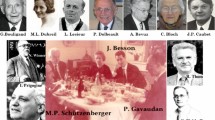Abstract
This work presents a mathematical model that establishes an interesting connection between nucleotide frequencies in human single-stranded DNA and the famous Fibonacci’s numbers. The model relies on two assumptions. First, Chargaff’s second parity rule should be valid, and second, the nucleotide frequencies should approach limit values when the number of bases is sufficiently large. Under these two hypotheses, it is possible to predict the human nucleotide frequencies with accuracy. This result may be used as evidence to the Fibonacci string model that was proposed to the sequence growth of DNA repetitive sequences. It is noteworthy that the predicted values are solutions of an optimization problem, which is commonplace in many of nature’s phenomena.
Similar content being viewed by others
References
Bannert, N., Kurth, R., 2004. Retroelements and the human genome: new perspectives on an old relation. Proc. Natl. Acad. Sci. 101, 14572–14579.
Chargaff, E., 1951. Structure and function of nucleic acids as cell constituents. Fed. Proc. 10, 654–659.
Dress, A., Giegerich, R., Grunewald, S., Wagner, H., 2003. Fibonacci-Cayley numbers and repetition patterns in genomic DNA. Ann. Comb. 7, 259–279.
Do, J.H., Choi, D.-K., 2006. Computational approaches to gene prediction. J. Microbiol. 44, 137–144.
Fibonacci, L., Singler, L.E., 2002. Fibonacci’s Liber Abaci. Springer, New York.
Forsdyke, D.R., Bell, S.J., 2004. A discussion of the application of elementary principles to early chemical observations. Appl. Bioinform. 3, 3–8.
Gregory, T.R., 2005. The C-value enigma in plants and animals: a review of parallels and an appeal for partnership. Ann. Bot. 95, 133–146.
Jordan, I.K., Rogozin, I.B., Glazko, G.V., Koonin, E.V., 2003. Origin of a substantial fraction of human regulatory sequences from transposable elements. Trends Genet. 19, 68–72.
Mitchell, D., Bridge, R., 2006. A test of Chargaff’s second rule. BBRC 340, 90–94.
Nocedal, J., Wright, S.J., 2000. Numerical Optimization. Springer Series in Operations Research. New York, Springer.
Salzberg, S.L., Yorke, J.A., 2005. Beware of mis-assembled genomes. Bioinformatics 21, 4320–4321.
Schwartz, S., Alazzouzi, H., Perucho, M., 2006. Mutational dynamics in human tumors confirm the neutral intrinsic instability of the mitochondrial D-loop poly-cytidine repeat. Genes Chromosom. Cancer 8, 770–780.
Watson, J.D., Crick, F.H.C., 1953. Molecular structure of nucleic acids. Nature 4356, 737.
Author information
Authors and Affiliations
Corresponding author
Rights and permissions
About this article
Cite this article
Yamagishi, M.E.B., Shimabukuro, A.I. Nucleotide Frequencies in Human Genome and Fibonacci Numbers. Bull. Math. Biol. 70, 643–653 (2008). https://doi.org/10.1007/s11538-007-9261-6
Received:
Accepted:
Published:
Issue Date:
DOI: https://doi.org/10.1007/s11538-007-9261-6




